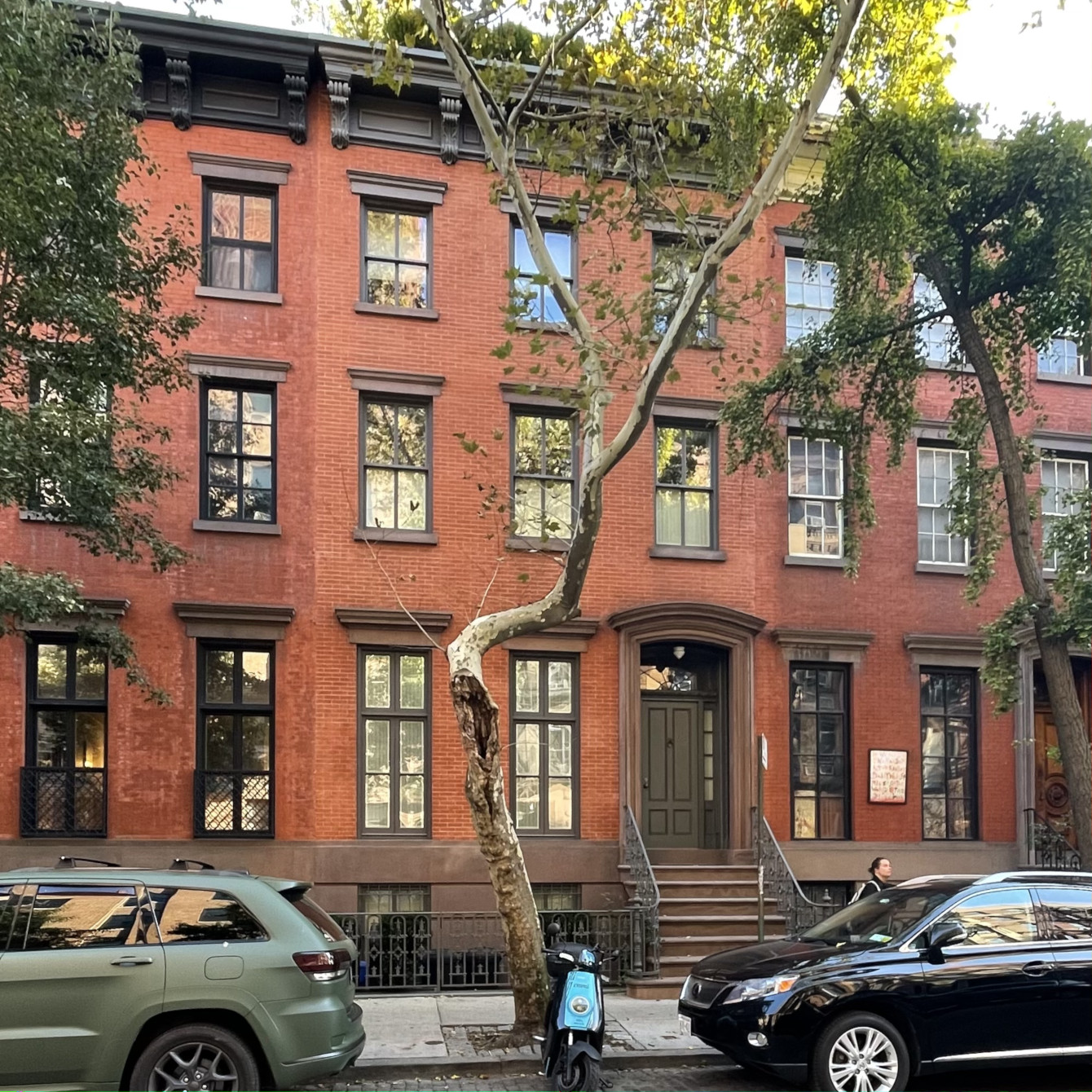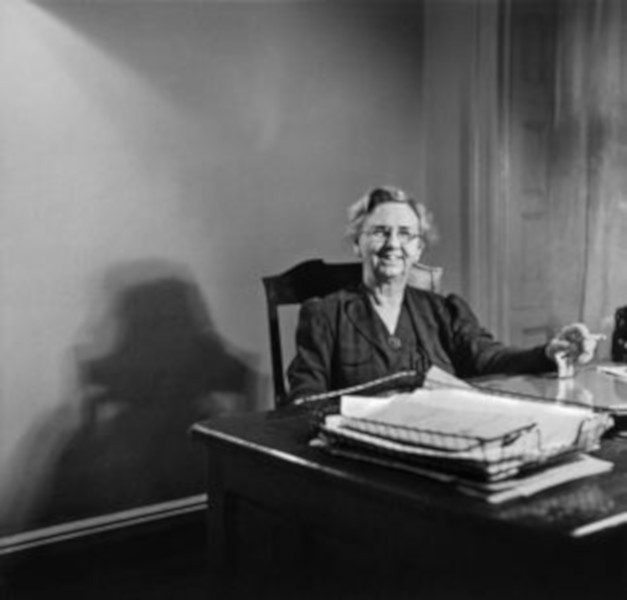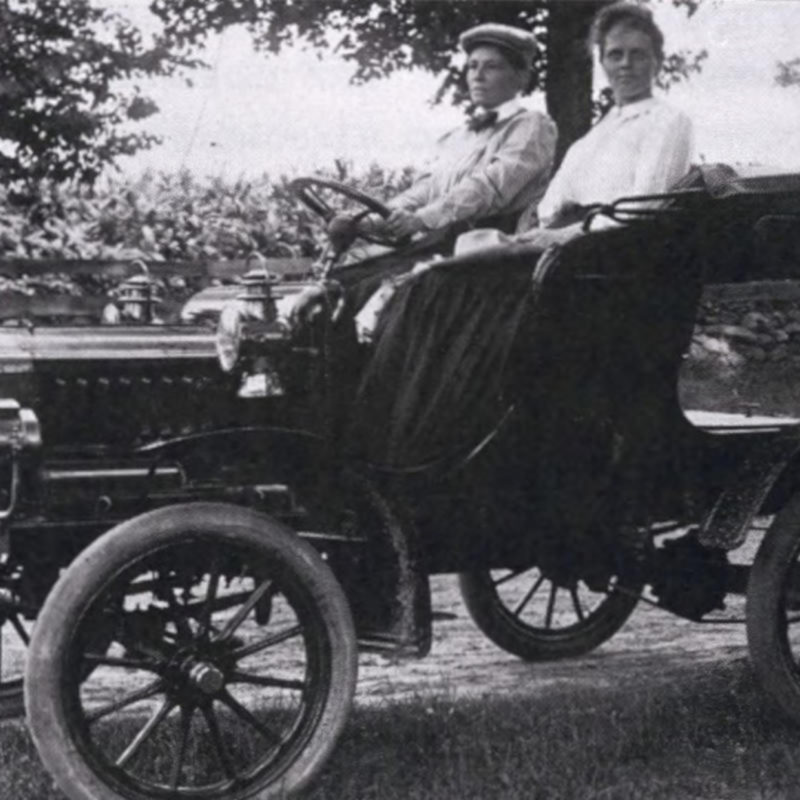
Caroline Pratt & Helen Marot Residence
overview
In 1928, this largely intact Italianate style brick rowhouse was purchased by Caroline Pratt, an education reformer and founder of the nearby City and Country School.
She lived here with her partner, labor activist Helen Marot, until their deaths in 1954 and 1940, respectively.
History
Education was one of the few professional fields that welcomed the increasingly large number of educated women graduating from American colleges, beginning in the late 19th century. Several of the leading figures in early 20th century progressive educational reform were women who lived in homosocial worlds and were intimately involved with other women. In Greenwich Village, this included Caroline Pratt (1867-1954), the founder of the City and Country School, and Elisabeth Irwin, founder of the Little Red School House.
Pratt was born in Fayetteville, New York, a small town near Syracuse, where, she related, much of her education came from watching and assisting local farmers and craft workers. She started teaching at age sixteen, then attended Teachers College in New York where she rebelled against the traditional curriculum. She then taught at a girl’s normal school (a teachers’ training institution) in Philadelphia, which she also found constricting. Instead, she returned to New York in order to establish her own school and develop her own teaching methods. She saw that children learned from doing and that their innate curiosity and desire to learn, evident in their individual and group play, should be harnessed.
It seemed to me that a school’s greatest value must be to turn out human beings who can think effectively and work constructively, who could in time make a better world.
Pratt began her experimental Play School in 1913 with a kindergarten class held at Hartley House, a local settlement. Later, with the assistance of Edna Smith and Lucy Sprague Mitchell, she expanded the school into a former stable on MacDougal Alley, behind Mitchell’s 15 Washington Square house. At the center of Pratt’s theory was creative play, especially with wood “unit blocks” that she had manufactured in rectangles, squares, cylinders and other shapes, still in use today. With these blocks and other simple items, play could become a creative, educational activity. Pratt innovated in the incorporation of field trips as a way to teach students about the world and stimulate their imagination. Rather than rote memorization, Pratt investigated learning by doing. For example, she had students learn math by running a school supplies shop or a post office.
In 1921, the school, renamed the City and Country School, moved to a rowhouse at 165 West 12th Street. It has expanded into seven adjoining houses on 12th and 13th Streets where it continues to educate children ages two through thirteen and bills itself as “one of the original and most celebrated progressive schools in the country.”
While in Philadelphia in the late 1890s, Pratt met Helen Marot (1865-1940), who came from an affluent local Quaker family. Marot had co-founded the Free Library of Economics and Political Science in 1897, which evolved into a center for radical reformers. She became a labor activist, investigating conditions of women in the local custom tailoring industry. Pratt and Marot met at the library and in 1901 moved to New York together, remaining a couple until Marot’s death in 1940. Pratt dedicated her autobiography, I Learn from Children (1948), to Marot, and Marot’s first book, Creative Impulse in Industry (1918), was dedicated to Pratt.
Along with Mary Dreier, Marot became a leading figure among the affluent women who supported the New York Women’s Trade Union League (WTUL), an organization established in 1903 that included middle- and upper-class women activists as well as working-class laborers. She served as executive secretary for seven years. Historian Lillian Faderman states that Marot was “one of the most effective allies.” Marot was a supporter of the 1909-10 strike by the shirtwaist workers, the largest strike of female workers up to that time, known as the “Uprising of the 20,000.” Marot summed up her experiences during the strike in an article written in 1910.
Unlike Dreier, Marot became increasingly less interested in organizing among Jewish and Italian immigrant women and advocated for turning the attention of the WTUL to organizing trades such as bookkeeping and other office work that, at the time, largely employed “American” women. This caused a rift with leading Jewish working-class WTUL activists, including Rose Schneiderman and Pauline Newman. Marot resigned from the WTUL in 1913. She continued to advocate for labor, writing the 1914 book American Labor Unions and the 1918 Creative Impulse in Industry and serving on the editorial board of the socialist journal The Masses until it was shuttered by the government, and as an editorial writer for the progressive literary journal The Dial.
After living in several rented apartments in Greenwich Village, Pratt purchased 252 West 12th Street in 1928. She and Marot lived in part of this house for the rest of their lives.
Entry by Andrew S. Dolkart, project director (November 2021; last revised August 2022).
NOTE: Names above in bold indicate LGBT people.
Building Information
- Architect or Builder: unknown
- Year Built: 1857
Sources
Annalise Orleck, Common Sense and a Little Fire: Women and Working-Class Politics in the United States, 1900-1965 (Chapel Hill: University of North Carolina Press, 1995).
Caroline Pratt, I Learn from Children: An Adventure in Progressive Education (New York: Simon & Schuster, 1948).
“Caroline Pratt Dies; Headed ‘Play School,’” New York Herald Tribune, June 7, 1954, 20.
“Caroline Pratt, Educator, Dead,” The New York Times, June 7, 1954, 23.
Helen Marot, “A Woman’s Strike – An Appreciation of the Shirtwaist Makers of New York,” in “The Economic Position of Women,” Proceedings of the Academy of Political Science in the City of New York (New York: Columbia University, 1910), 119-128.
Kathleen Banks Nutter, “Helen Marot,” American National Biography, 1999.
Lilliam Faderman, To Believe in Women: What Lesbians Have Done for America – A History (Boston: Houghton Mifflin Co., 1999).
Mary E. Hauser, Learning from Children: The Life and Legacy of Caroline Pratt (New York: Peter Lang, 2006). [source of pull quote]
Robert H. Beck, “Progressive Education and American Progressivism: Caroline Pratt,” Teachers College Record 60 (1958): 129-137.
Do you have more information about this site?
This project is enriched by your participation! Do you have your own images of this site? Or a story to share? Would you like to suggest a different historic site?



